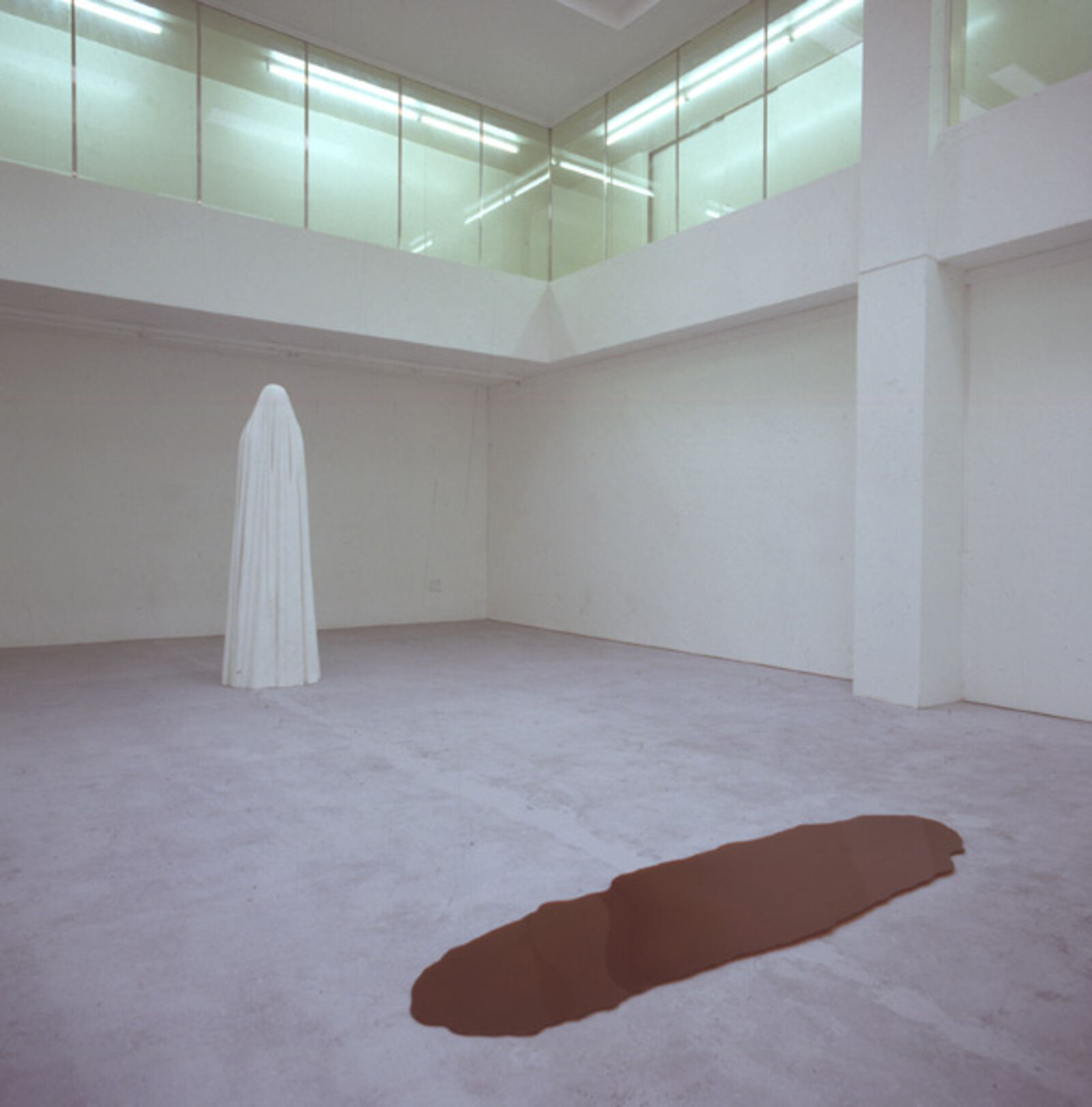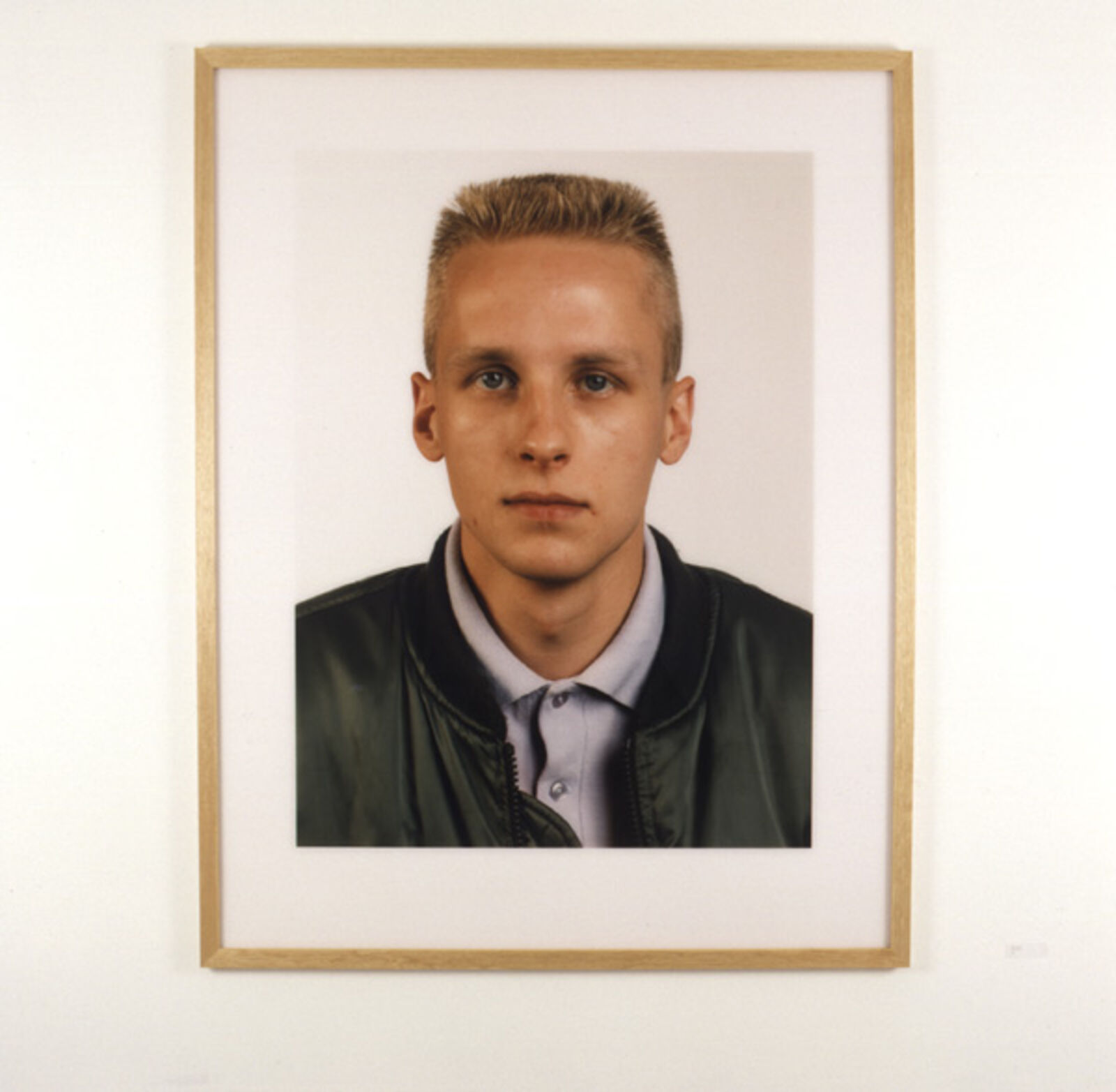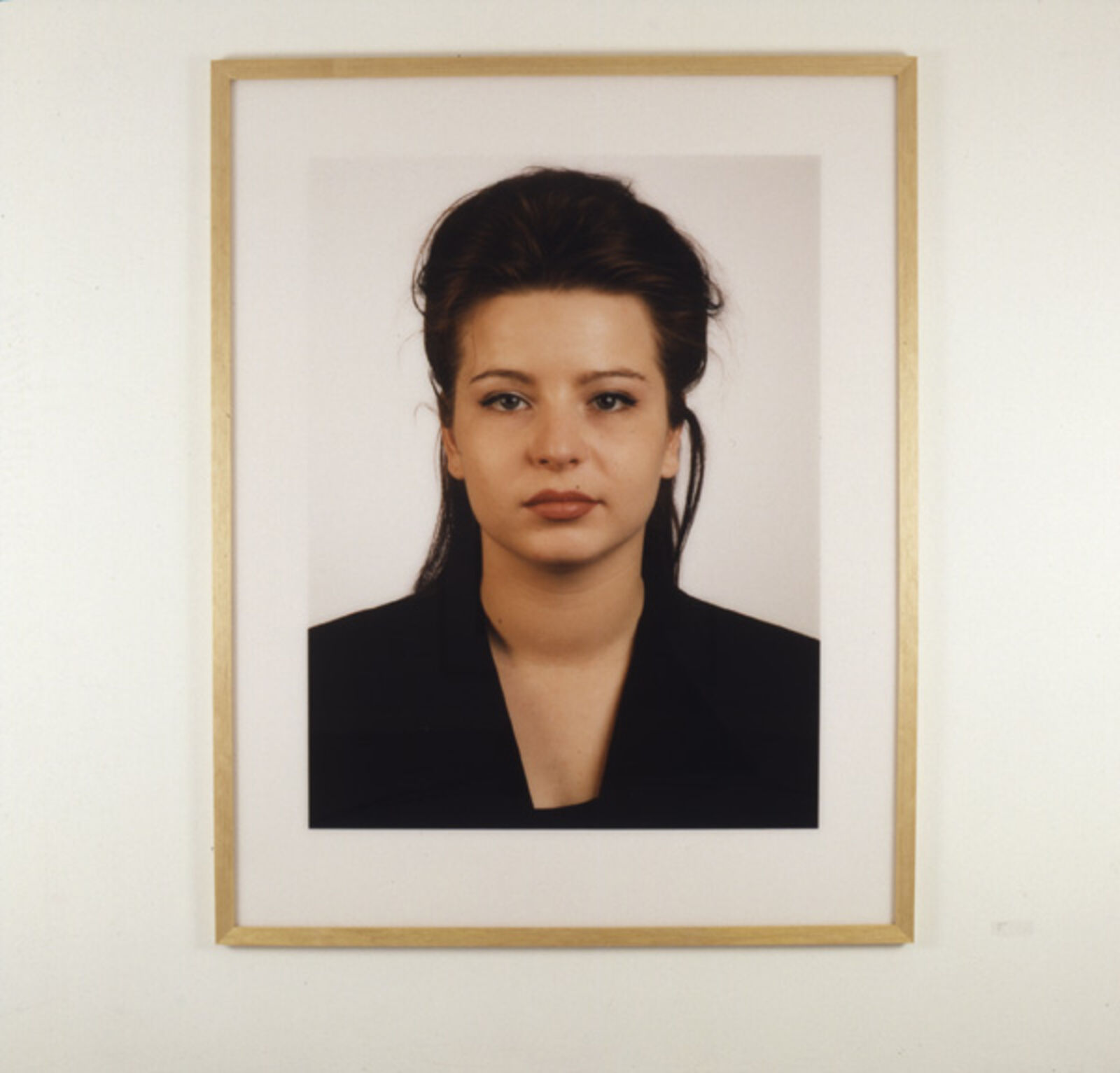Katharina Fritsch / Martin Honert / Thomas Ruff "Katharina Fritsch / Martin Honert / Thomas Ruff"
25.02–25.03.1989
de Appel, Prinseneiland 7, Amsterdam
de Appel, Prinseneiland 7, Amsterdam

Katharina Fritsch, Gespenst Blutlache
© Henni van Beek, Amsterdam
© Henni van Beek, Amsterdam

Martin Honert, Haus
© Henni van Beek, Amsterdam
© Henni van Beek, Amsterdam

Martin Honert, Untitled
© Henni van Beek, Amsterdam
© Henni van Beek, Amsterdam

Thomas Ruff, Peter Mertin
© Henni van Beek, Amsterdam
© Henni van Beek, Amsterdam

Thomas Ruff, Julia
© Henni van Beek, Amsterdam
© Henni van Beek, Amsterdam
‘At first glance the sculptures of Katharina Fritsch ( 1956) look like anonymous products. What connection is there between the brilliant yellow Madonna that she set in a square in Münster (during Skulturprojekte 87) and the four metres high elephant exhibited in the Krefeld Museum in 1987? The precise form and execution of each of Fritsch's objects - the money boxes (1987), the key-ring with eight identical master keys (1984), the pyramid made of vases (1987-‘88) -lead one to suppose that they are meant to be prototypes. Their scale and colour, however, diverge so greatly from industrial models that they become unique examples. Even a hypothetical repetition of the same form wouldn't make it into a mass product and thereby into a ready-made. This character of a 'product', and the precision that goes with it, even when all it is is a photo showing the 'average' visitor to the Sonsbeekpark with his dog (1986), enables Fritsch to transcend expressiveness which she considers too vague a concept. The surrealistic positioning, shape or colour of her works mean that the viewer experiences them as intrusive. Katharina Fritsch works in Dusseldorf. Her most recent exhibitions were in the Kunsthalle in Basle and in the lCA in London. Her work was also represented in the BiNATIONALE in Dusseldorf and Boston. In De Appel a joint exhibition will be held with Martin Honert and Thomas Ruff, who also work in Düsseldorf and operate in a similar atmosphere.
The precision of Fritsch's sculptures corresponds to the clarity that is the hallmark of Thomas Ruff's photo-works. In contrast with staged photography that is posed Ruff shows something that already exists. In his larger than life portraits he combines the smooth technical perfection of a publicity photo with the neutral character of a snapshot. The medium is manipulated in a couple of fundamental ways: the lighting is constant and brilliant, the background is pale and uniform and the figures are, in most cases, photographed frontally and at shoulder level. The faces of the people portrayed have something very normal; they could be photos of people one knows. Because of their size however every detail is enlarged. While in the case of someone we know we quickly overlook any irregularities in skin and form, in Ruff's photos these details are exposed to the light without any reticence. No emotion whatsoever can be read from their faces; their expressions are almost uniform. All the same many viewers will not be able to avoid identifying with the people portrayed.
Where Fritsch and Ruff are precise and clear, Martin Honert ( 1953) can be described as outspoken. Honert's work has a similar kind of self-evident and non-mystifying presence. In the case of Honert it is only the elements that are self-evident; the placing and the context provoke hilarity. What are we supposed to make of about twenty swimmers, a boys' class, who aren't in any swimming bath but are suspended in a stairwell? The choreography resembles a photographically fixed moment which is reconstructed so that the figures are delivered from their surroundings and hung by nylon threads in the stairwell of the Art academy in Dusseldorf. And what about a football team that hangs in the air like a mobile? Is it a figurative Calder? A work from 1986 looks like a ready-made: three round mosaics on which in blue on white, one, two or three waves are shown. Signs that could have been used in swimming baths to indicate the height of the waves. In 1984 Honert made a table on which there is a plate with a pudding. If you press the button the table starts vibrating. Out of a painting depicting a children's crusade the throng advances - in three dimensions. The polyester figures do not suggest figures that have come to life, but are life-size dolls which like the characters in a Christmas crib imitate in an artificial way what really took place. It is as though Honert is intending to create playful fantasies in his work in order to give the absurd the same value as the so-called logic of reality.’ (‘Katharina Fritsch’, ‘Thomas Ruff’, ‘Martin Honert’, Newsletter De Appel, 4 (1989) 1.)